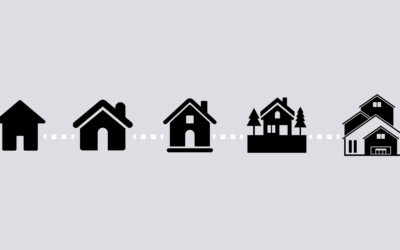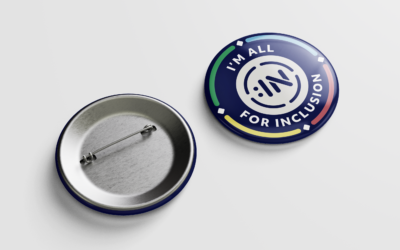This interview is part of our Empowered Women series in partnership with FREE THE WORK, The 3% Movement, The Female Quotient, and TIME’S UP Foundation — a coalition effort to champion more equal and accurate representation of women leading at work, at home, in their communities and beyond. Read more about this initiative here and download images from the Empowered Women collection here.
Christina Morillo is an information security and enterprise identity professional, as well as a technical product manager. Her experiences across enterprise security and identity, insider threat, cloud identity programs and deployments have taken her to companies like Morgan Stanley, Fitch Ratings, AllianceBernstein, Microsoft, and currently Marqeta, where she is a Senior Security Product Manager. In addition to her professional work, Christina co-leads Women in Security and Privacy’s New York Chapter and volunteers with multiple organizations aligned with her mission of getting more women and underestimated folks in tech. In 2015, she also co-founded #WOCinTech Chat, the grassroots initiative best known for boosting visual representation through the open-source collection fo stock photos featuring women of color technologists.
We spoke with Christina about her career path, work, and her advice for those currently navigating the path to a career in tech.
Hi Christina! Tell us about yourself — how did you get to where you are today?
I was born and raised in New York City to Afro-Dominican parents. I grew up with my mother and her family. My uncle, my mother’s brother, was an electrical engineer and brilliant at Math. Thinking back, I remember being super fascinated by all of his STEM books, circuits and gadgets, I was always a curious child never afraid to tinker. After my high school years, I ventured off to college to study Information Technology & Network Administration. While going for my undergrad I started building my experience by working help desk and technical support roles. I gradually moved into desktop support and system/network administration. By the time I graduated, I had the necessary experience to land a job as a Jr. network/system administrator and was offered an information security role shortly thereafter. The rest, as they say, is history. I’ve been in the industry for quite a while.
You are an information security, enterprise identity professional, and Senior Product Manager, Security. What first sparked your interest in tech?
I’ve always had an insatiable curiosity about how computers, networks and all around technology works past the surface level. When I finally got to build my own PC, I fell in love with all the bits and bites. My college years really helped me bring the structure and foundational knowledge I needed to drive my career forward. It also brought community. Those were the early days of AOL, 14K/56K dial-up modems, so definitely not as advanced as today, but it’s where I learned how to navigate and appreciate the power of the internet.
In addition to your work, you also co-lead the Women in Security and Privacy’s New York City chapter and you regularly volunteer with multiple organizations dedicated to supporting more women and people from underrepresented groups in the tech industry. How does community help foster a more inclusive tech industry?
None of us were meant to go through the ups and downs of career and life all alone. While it is possible, it is extremely difficult. Finding a supportive community can really help you get through challenging times throughout your personal and professional life.
In 2015, you co-founded #WOCinTech Chat, a grassroots initiative best-known for boosting visual representation through an open source collection of stock photos featuring women of color technologists. What inspired this project and how has the project grown over the last 5 years?
When we were creating our website, I noticed that there were few stock images of women of color in professional and technical settings. At the time, the stereotypical photos available on Getty images or google were simply terrible. So, I decided that we should hold a shoot, made up of women of color who actually work in the tech industry, with the idea that we could open-source the collection via creative commons, and people all over the world could then use these images in all of their materials, websites etc. with the goal of increasing representation in tech. We didn’t want people to experience the same frustration we faced.

The stock photos put a face to something many women of color in tech have been saying for years: “We are already here.” We were done with the excuses: it’s a pipeline issue and there aren’t enough qualified candidates. We didn’t want today’s problems to be put off to the indeterminate future, when the young girls of color in today’s pipeline finally enter the workforce. Because we knew if they were to enter the pipeline in the first place, they deserved to see who looked like them today.
While the photos live on via creative commons with attribution, the initiative does not. We realized that diversity work is a full-time job and decided to pivot by focusing on growing our careers respectively, our families, and scaling mentorship in other ways.

What are your thoughts on why diverse visual representation in tech is important to help change the status quo in the industry?
If we don’t see proper representation of ourselves in/across tech, media and other aspects of society, how will the younger generation know that it is possible? What will give folks who look like us hope? While I am thankful that my journey was what it was, I look back and wish that I had seen the potential paths earlier. Seeing folks who look like you in places where you aspire to be, gives you the drive and motivation you need to strategically navigate these challenging spaces.
What are some of the greatest opportunities you see right now to drive meaningful change when it comes to more equitable representation in the tech and startup worlds?
The opportunities have always been present but have been ignored. While visual representation is important, and may help to combat biases, founders, executives and VCs really need to to get out of their own bubbles and pay attention. The reality is that diverse teams are great for business yet not enough effort is put into funding and investing in Black and Brown founders and talent.Inclusion is less about stats and more about listening to, investing in, promoting and retaining talent that pushes against the status quo.
What advice would you give to those who are currently navigating the path to a career in tech?
First, don’t compare your beginnings with anyone else’s middle. The person you think was an overnight success has really been years in the making. Instead, focus on and appreciate your path. There is no cookie cutter template because your experience will be custom to you, however, there is no quick route and you will need to put in the work. If you’re in college studying C.S., take advantage of the diverse set of programs offered at the school; ex. mentorship, sponsorship, internships, apprenticeships, even internal/external work study programs. Get as hands on as you can, experience is the only real teacher. Hone your communications skills (verbal and written) as well. A big part of working in tech revolves around communicating with people. Lastly, find your tribe, your community, the folks who will inspire you and help you navigate the muddy waters while pulling you up and out of them. Learning how to cultivate strong relationships will be your key to unlock many doors.
About The 3% Movement
Started to spotlight a huge business opportunity in advertising — the lack of female creative leadership and its impact on connecting with an overwhelmingly female marketplace — The 3% Movement has grown exponentially since its 2012 launch. Hosting events in 27 cities globally and offering consulting and certification programs that amplify creative cultures, 3% has helped drive the number of female creative directors in the U.S. from 3% to 29%.




